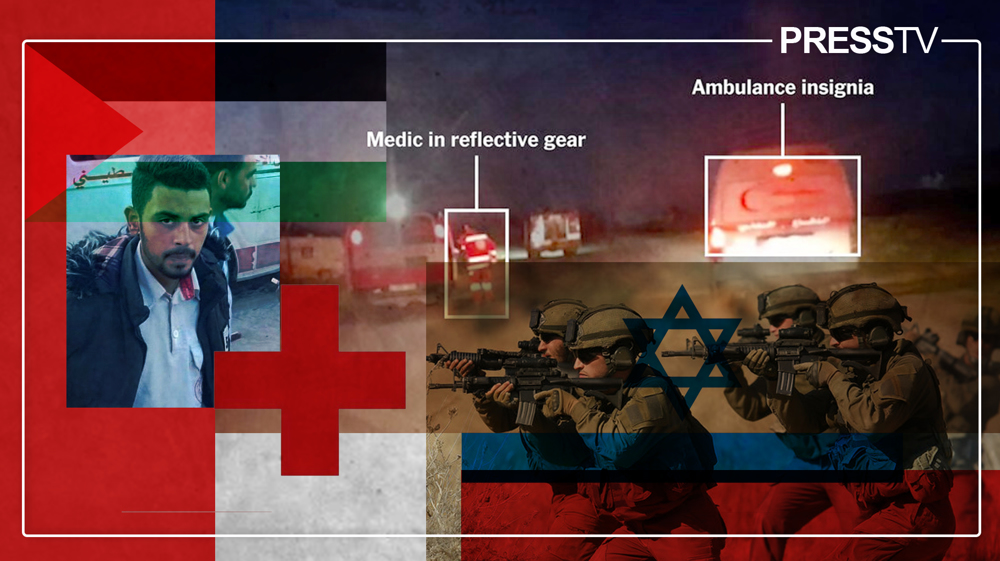Explainer: Why is Iran's supersonic cruise missile new nightmare for enemies?
By Ivan Kesic
On July 31, Brigadier General Ramezan Sharif, a spokesman for the Islamic Revolution Guards Corps (IRGC), said that new strategic systems and capabilities of the IRGC Navy will be unveiled soon.
The last time he made such an announcement in late May, the first domestically-built hypersonic ballistic missile was unveiled, which grabbed headlines worldwide.
This time, Sharif did not specify exactly what kind of strategic weapon it was and whether it was about missiles, vessels or some other military system.
Over the next few days, the IRGC announced new deliveries of previously known sophisticated homegrown missiles and drones, but with upgraded warheads, increased ranges and furnished with artificial intelligence (AI).
On August 9, it was announced that Iran has developed the technology to produce supersonic cruise missiles.
More information has not been provided, so the exact range, payload and guidance are still not known, although based on previous statements and estimates, it can be concluded that it is an anti-ship missile.
How is supersonic different from hypersonic missiles?
With the Fattah hypersonic missile, unveiled in early June and described as highly maneuverable, many were left wondering why the announcement of a seemingly similar supersonic missile came after a faster hypersonic missile.
Although the announced supersonic missile and the hypersonic Fattah may have quite similar range, payload and cost, they are two very different weapons.
The defined transition from supersonic to hypersonic speed is Mach 5, which does not mean that the former is a little slower and the latter a little faster than that limit, the most common difference is that hypersonic missiles are about five times faster.
The two weapons use different engines, supersonic most often ramjet engines, and hypersonic (depending on the subtype) scramjet airbreathing engines or non-airbreathing rocket engines.
An important difference is also in the operating altitude. While a hypersonic missile spends most of its trajectory at an altitude of tens of kilometers, a supersonic cruise missile can fly at an altitude of only a few tens of meters.
High maneuverability, specified for the hypersonic Fattah, is nevertheless extremely small in relation to the entire trajectory from the launch site to the target, i.e. only a few percent and mostly in the terminal phase. Also, there are almost no oscillations in speed.
On the other hand, the maneuverability of cruise missiles is incomparably greater because they can turn sharply, do U-turns, slow down and accelerate (albeit rarely).
What preceded its development?
Cruise missiles are not new to Iran's armed forces, which have been using them for four decades, however, all operational models so far have subsonic speeds.
Back in the 1980s, during the war with West-backed Iraq, Iran used the HY-2 Silkworm, an anti-ship cruise missile imported from China, developed from the Soviet P-15 Termit.
During the 1990s, due to growing US threats in the Persian Gulf, Iran continued to import anti-ship cruise missiles from China, but much more advanced models such as the C-701, C-704, C-801 and C-802.
The reality that Iran possesses cruise missiles was not welcomed by the US, which in 1987 publicly accused China of exporting such weapons and imposed sanctions on high-tech sales.
In 2000, Washington passed a new law authorizing sanctions against individuals and entities transferring technology and materials capable of contributing to Iran's cruise missile programs.
Iran, however, continued to acquire cruise missiles, such as the Soviet Kh-55, and based on the models it had, Iranian experts worked hard to develop their own more advanced missiles.
In the mid-2000s, Iran introduced several anti-ship cruise missiles, such as the rocket-powered Kowsar, Zafar and Nasr-1 (ranges up to 35 km), and the turbojet-powered Ra'ad, Saeqeh and Noor (up to 200 km).
During the following years, improved and newer anti-ship models Qadir, Ya Ali and Abu Mahdi, with a range of up to 1000 km, were presented.
At the same time, excluding naval equipment, Iran was also developing long-range cruise missiles (up to 3000 km), such as Meshkat, Soumar, Paveh, Hoveyzeh and Qadr-474.
Decades of cruise missile development have allowed Iran to accumulate vast experience in perfecting guidance, engines and warheads, as well as land, sea, submarine and air launch platforms.
As for supersonic cruise missiles, there has been long-standing speculation that Iran has acquired the Russian P-270 MVE Moskit (SS-N-22 Sunburn), 3M54-1 Kalibr and P-800 Oniks, but such claims have never been confirmed by either Iran or Russia.
Since 2007, foreign military analysts also began speculating about Iran's domestic supersonic cruise missile program, which is likely related to the advancement of the transonic Noor that flies supersonic in the terminal phase.
The first Iranian statements about this weapon date back to August 2015, when then-Defense Minister Hossein Dehqan announced that Iran plans to produce naval cruise missiles with supersonic speed in the near future.
In February of this year, a similar statement was made by IRGC commander General Hussein Salami, saying that Iran is developing cruise missiles capable of traveling at supersonic speeds.
What is the latest major breakthrough?
The most important technological leap clear from the latest announcement about the supersonic cruise missile is the successful completion of the ramjet engine and its successful implementation on the missile.
All other components necessary for such a weapon, namely materials, warheads, guidance, sensors and others, are already well known to Iranian engineers.
For almost two decades, Iran has had Tolou-4 and Tolou-5 mini turbojet engines that are used on numerous subsonic cruise missiles and drones.
Iran has also mastered a variety of solid- and liquid-propellant rocket engines, sufficient for supersonic and hypersonic speeds, but not suitable for low-flying cruise missiles.
The newly operational ramjet engine represents a big step forward because it has not been used yet on fully domestic weapon models.
The development of the RJ-HP1 mini ramjet engine is already known to the public, as components such as the flame holder and the cooling shroud were presented in November 2019 at a ceremony attended by the Leader of the Islamic Revolution, Ayatollah Seyyed Ali Khamenei.
According to the information presented by the manufacturer, the RJ-HP1 engine is made of superalloys and steel, its length is less than a meter, it weighs 53 kg and it enables speeds from Mach 2 at sea level to Mach 2.7 at altitude.
What are its strategic implications?
A supersonic cruise missile is a useful addition to the existing Iranian arsenal of faster high-flying ballistic missiles with higher payloads, subsonic cruise missiles, and slow low-flying drones with small warheads.
It is to be expected that there will be at least two versions, one naval with shorter range (300 km) and sea-skimming technology, and the other long-range (up to 2000 km) for land-attack operations.
In general, naval supersonic cruise missiles are a nightmare for enemy ships as they are extremely difficult to detect and shoot down, hence they are called carrier-killers.
Experiences from the wars in Iraq and Ukraine show that low-flying weapons over land, including subsonic cruise missiles and even slower drones, are equally difficult to intercept for existing air defense systems.
Supersonic cruise missiles, therefore, give Iran another major advantage both in the Persian Gulf and against hostile regimes across the region.
This especially concerns the Zionist entity, which, together with the US, has spent three decades and billions of dollars on the development of anti-ballistic systems of questionable effectiveness.
Now, it has to deal with growing arsenals of low-flying drones and high-speed cruise missiles, which they have completely neglected.
Press TV’s website can also be accessed at the following alternate addresses:

War on aid workers: How Israeli military turned Gaza's lifesavers into targets

More intl. students face deportation amid Trump's crackdown on pro-Palestine activism






 This makes it easy to access the Press TV website
This makes it easy to access the Press TV website